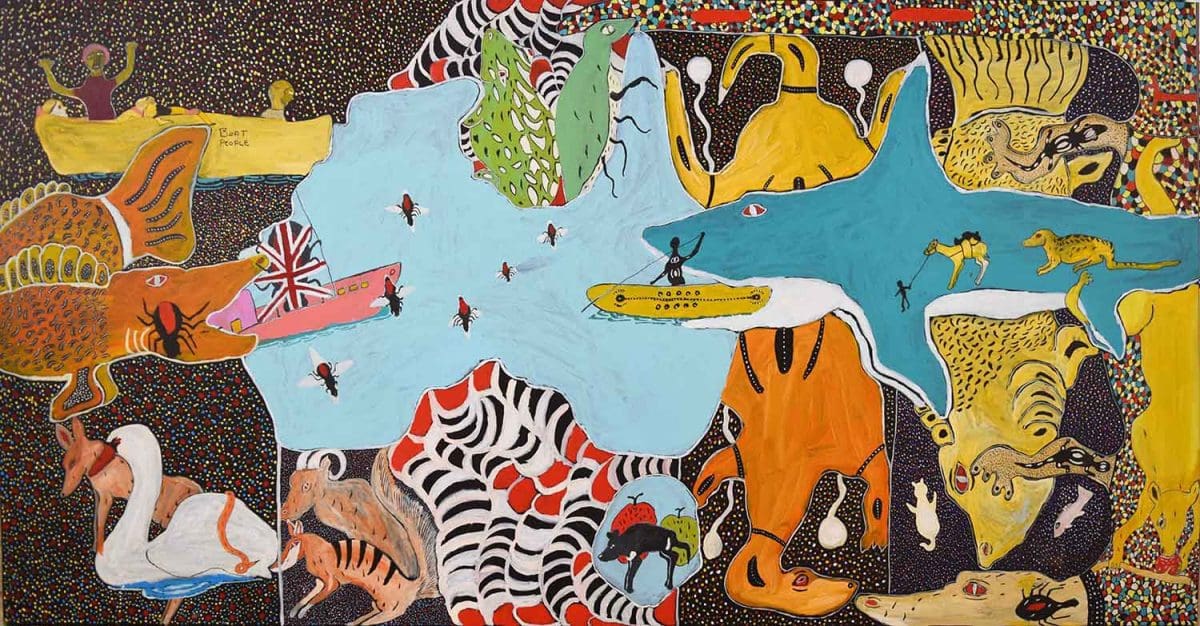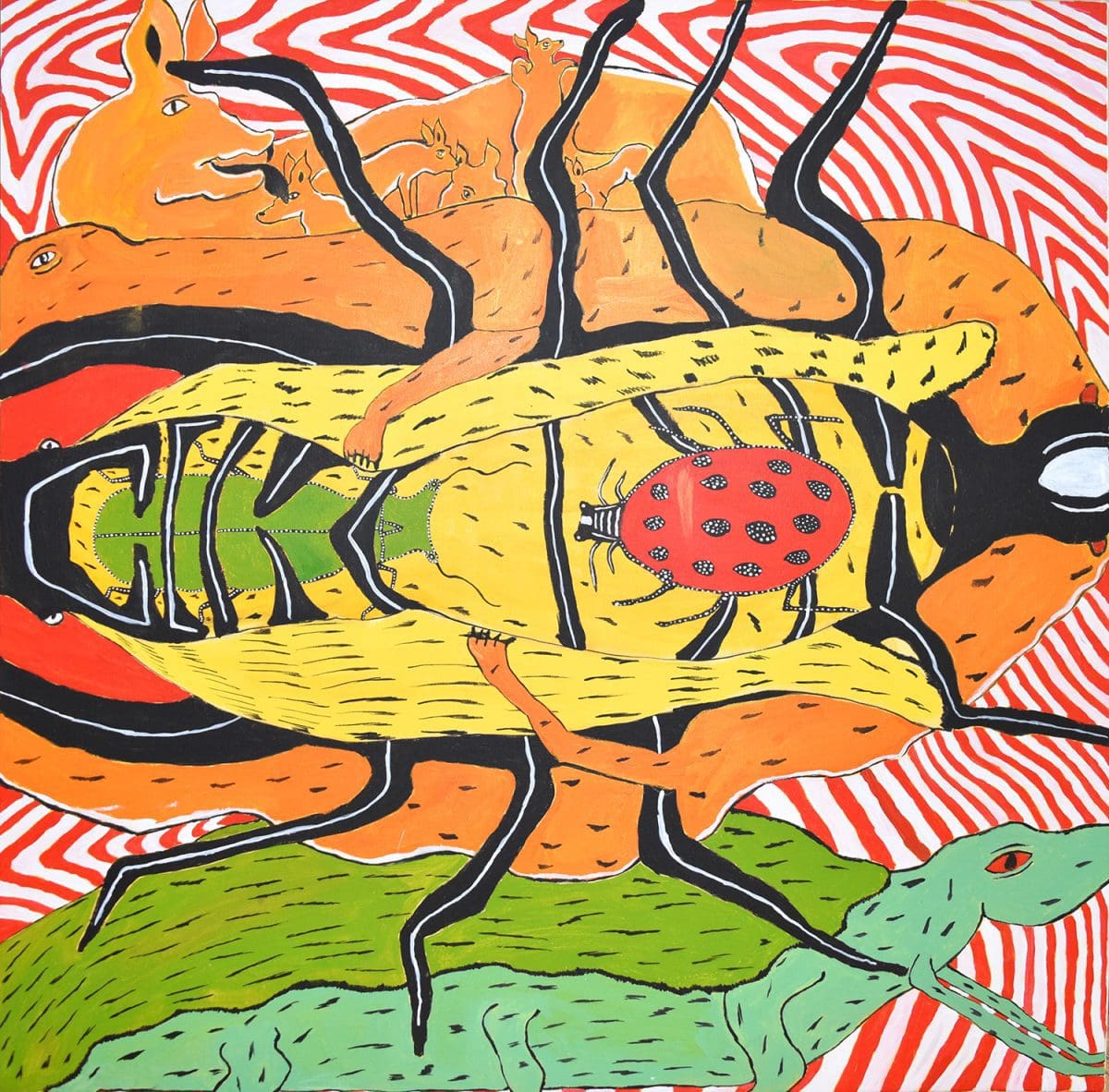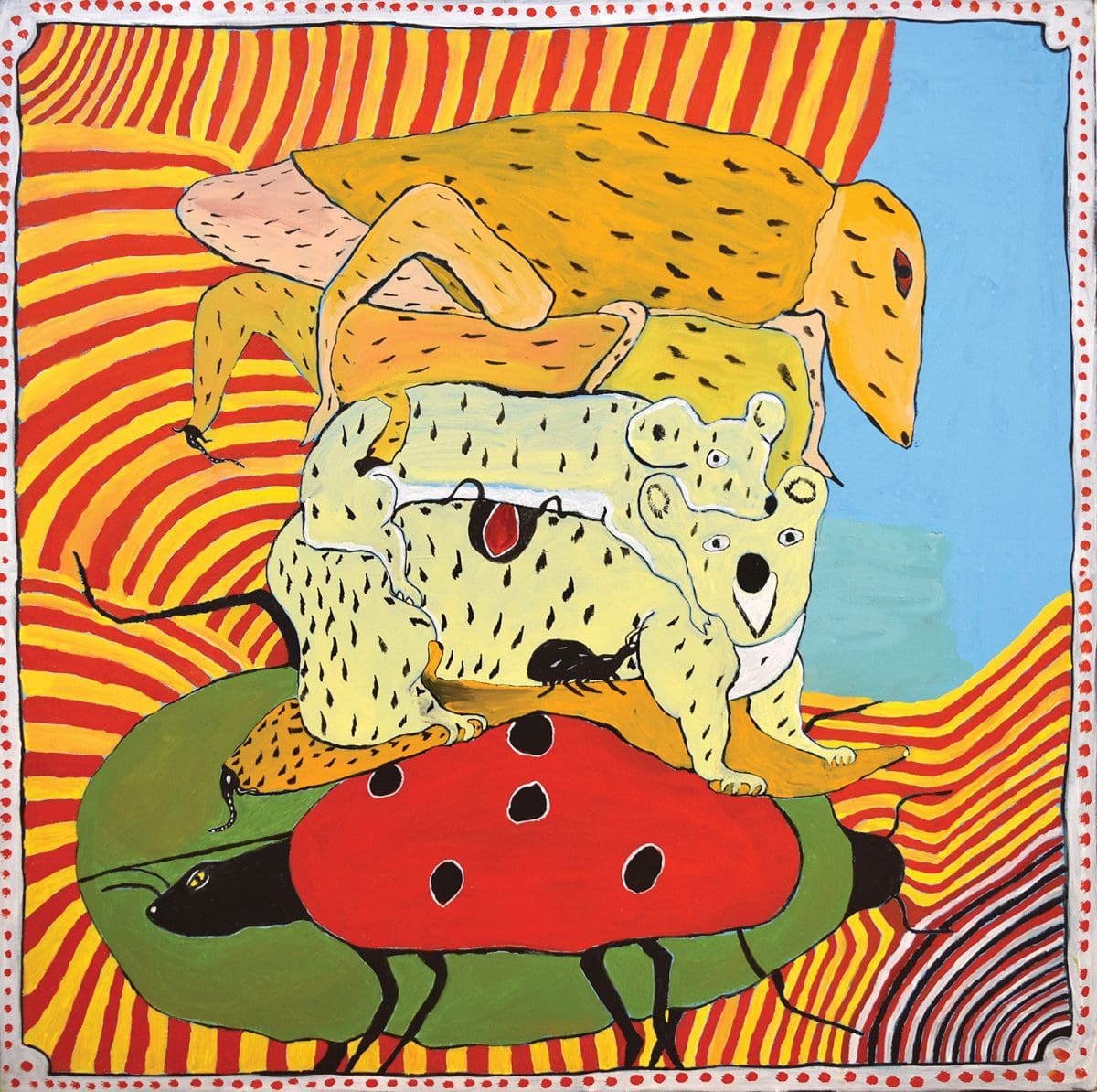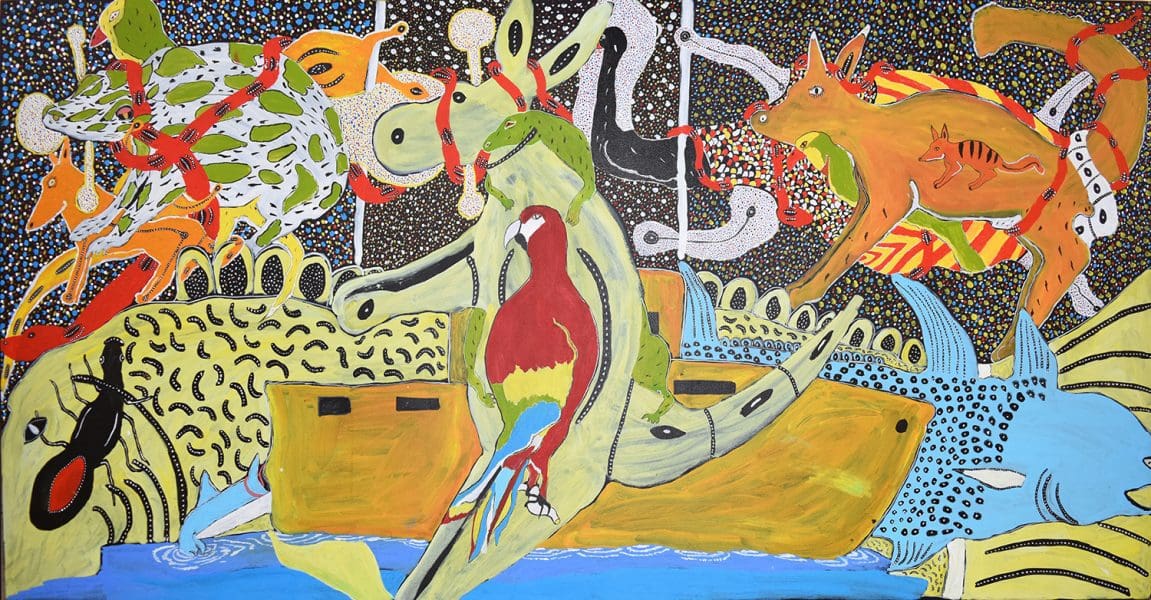
Piercing the veil
A new exhibition at Buxton Contemporary finds a rich complexity in the shadowy terrain between life and death.

John Prince Siddon, Australia Mix it All Up, 2019, acrylic on canvas, 240 x 120 cm. Courtesy of the artist.

John Prince Siddon, Escape, 2019, acrylic on canvas, 120 x 120 cm. Courtesy of the artist.

John Prince Siddon, Fear, 2019, acrylic on canvas, 120 x 120 cm. Courtesy of the artist.

John Prince Siddon, One Punch Mob, 2019, mixed media installation including leather, wood, bone, feathers and acrylic, dimensions variable. Courtesy of the artist.
The paintings of John Prince Siddon, with their mystical motifs, cosmic mysteriousness and hints of the supernatural, are the kind of art that appears to unlock certain secrets of consciousness, of metaphysics, of creation even. Emilia Galatis, the curator of his new exhibition All Mixed Up, encapsulates his expansive aesthetic neatly when she describes his work as “technicolour occult.”
We can add to that, perhaps a little audaciously, that Siddon is a dazzling mixture of Rover Thomas, and the corporeal and often confronting imagery of avant-garde filmmaker Alexander Jodorowsky.
All Mixed Up at Fremantle Arts Centre is mostly made up of newly commissioned pieces, though some notable examples of Siddon’s previous work, such as One Punch Mob, 2019, will also be displayed. According to Galatis, the new works traverse the ethereal space between myth and reality, as is his established way; she describes Siddon’s world as an “Australian dystopia on acid.” All Mixed Up also toys with a reappropriation of familiar Australian iconography and symbols.
“Some things that spring to mind from his most recent work include a man vomiting a snake, the Man from Snowy River, a spider Union Jack, a multicultural couple punching each other in the face, footless people and so on,” says Galatis. “He is a man of many pasts, as elusive as he is literal; he waltzes with the macabre, dancing on the fringes whilst throwing another shrimp on the barbie.”
Siddon (known colloquially as ‘Prince’), is a Walmajarri man with a strong affiliation with the Mangkaja Arts Resource Agency at Fitzroy Crossing in the Kimberley, about 400 kilometres west of Broome. His father, the painter Pompey Siddon, was one of the founders of this immensely influential organisation that supports a minimum of 100 artists across four language groups.
In his younger days, Siddon worked on cattle stations until a horse riding accident led to the loss of a leg. After defying medical prognoses, he was able to walk again, and it was in the wake of the accident that he embraced art and learnt to paint. Galatis first came across his work several years ago at Darwin Aboriginal Art Fair; her eye was caught by the extraordinary painting Deadly Place, 2016, which shows a bushman wielding various dead animals against a backdrop of the Australian continent painted in the colours of the national flag.

“It was so uncanny, so on point,” she says, “so hilarious yet painfully serious at the same time. There was this familiarity and unfamiliarity – a lightness and darkness about the work, it was alluring yet confusing.” All of this makes its way into All Mixed Up. There is also, in a somewhat opaque way, a political dialogue threaded throughout the exhibition, which explores the intersection of mainstream Australian media and culture with remote Indigenous communities. For example, some of Siddon’s new work on cowhide leather is an overt statement on violence and the media’s often reductive and distorted presentation of violence among the Aboriginal population. One Punch Mob, a provocative installation work incorporating leather, cow skulls and various ‘kitsch ornaments’, is another piece that addresses violence and its aftermath, all in Siddon’s “playful yet sinister code.”
“It’s a complex mix of the violence he sees on TV and the violence he sees all around, and the senseless loss that occurs,” says Galatis. “And the constant maps of Australia remind me that he is concerned with the macro and the micro.
The role of Mangkaja Arts in Siddon’s work is significant but not primary. According to Galatis, he paints in a support facility where his wife resides, with the centre not directly facilitating the paintings – although it does provide his “very particular” materials, such as the kangaroo hides, animal bones, satellite dishes and tin drums. Furthermore, Siddon’s work does not quite fit with the common style among other Mangkaja artists, with Galatis stating, “Many people at Mangkaja, if they paint figuratively [as Siddon does], it’s more landscape style or realistic. The majority would be classed as abstract works.”
As for where Siddon fits commercially within the complex, sometimes fraught, potentially lucrative international business that is Aboriginal art, his ‘outsiderness’ and the fact his work decisively departs from conventional ideas of what Aboriginal art is, might potentially be his selling point. “In my opinion, John Prince Siddon is an important Australian contemporary artist whose work challenges you in all the right ways,” says Galatis. “It disrupts all our familiar notions of Australian and Indigenous art.
“Nobody paints like him. His work has always defied the traditional artwork of Mangkaja Arts and the Fitzroy Crossing region and is committed to being nothing but itself, yet is still firmly connected to deep desert tradition. This exhibition is important in signifying his work as an outlier, as brave. Prince truly is rock and roll.”
All Mixed Up
John Prince Siddon
Perth Festival, Fremantle Arts Centre
5 February – 22 March
This article was originally published in the January/February 2020 print edition of Art Guide Australia.